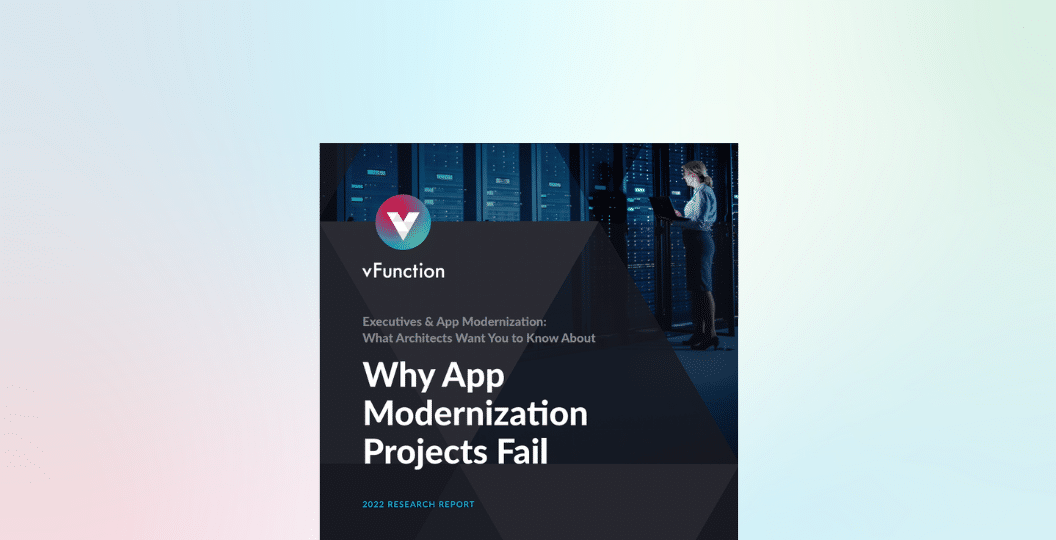In the recent report “Why App Modernization Projects Fail”, vFunction partnered with Wakefield Research to gather insights from 250 IT professionals at a director level or higher in companies with at least 5000 employees and one or more monolithic systems.
Application modernization is not a new concept. That is, if companies are developing software, at some point they will need to modernize it. Because a code base continues to grow, it becomes complex, and engineering velocity slows down.
So what is elevating app modernization to a top priority for so many companies now? We see two major trends that are driving forces in the market:
- Digital Transformation – Many companies expedited these initiatives in response to the COVID-19 pandemic
- Shift to the Cloud – The benefits of cloud platforms has driven more companies to institute an executive mandate to move to the cloud
We also see competitive pressures increasingly driving companies to embark on modernization projects. Digital natives with software built for the cloud, originating with modern architectures (cloud native) and stacks, are able to rapidly respond to the market with innovative features and functionality, whereas established companies are fighting with scalability and reliability issues—which brings heavy competitive pressure in a fight for customer loyalty.
Today, companies spend years mired in complex, lengthy, and inefficient app modernization projects, manually trying to untangle monolithic code.
So, it is not surprising that 79% of app modernization projects fail, averaging a cost of $1.5 million and a 16-month timeline.
There are many reasons for this: CIOs are under immense pressure to meet business objectives, having evolved into one of the most strategic roles on the executive team.
Undoubtedly, this role comes with changing priorities and limited resources. Additionally, architects are charged with modernizing monolithic apps, but often only have limited tools, teams, and time. Given the stakes, it is imperative that the C-Suite has a clear understanding of why modernization projects fail, and how investing in these modernization projects now benefits the company’s present and future.
To help provide for this, we partnered with Wakefield Research to survey 250 technology professionals—leaders, architects and developers at a director level or above—who have the responsibility of maintaining at least one monolithic app in a company of at least 5,000 employees.
The insights we gleaned say as much about the changing definition of successful outcomes as it does about cultures and how teams are organized to support these projects. The long-held notion of “lift and shift” is no longer considered a successful modernization outcome, and successful projects require a change in organizational structure to support the targeted modernized architecture.
We hope that this report will not only serve as valuable insight for those responsible for app modernization initiatives—but also as a reminder that having the proper tools in use plays an invaluable role in the success (or failure) of every venture.






